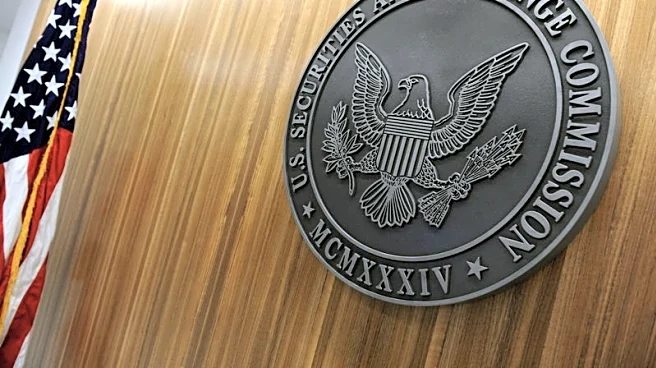What's Happening?
The U.S. Securities and Exchange Commission (SEC) has undergone a significant transformation in its approach to regulating the cryptocurrency market, driven by leadership changes in 2025. Gary Gensler and Jaime Lizárraga stepped down, making way for Paul Atkins, who has led a shift from aggressive enforcement to a policy of constructive engagement and clarity. This new direction has been reinforced by Hester Peirce, who now heads the SEC’s Crypto Task Force and has played a central role in reshaping the agency’s regulatory agenda. The SEC’s updated strategy has already had tangible effects on the market. In a notable move, the agency dismissed civil actions against major players like Coinbase, emphasizing dialogue and compliance over punitive measures.
Why It's Important?
The SEC’s recent policy reshaping reflects a more structured and transparent regulatory approach to the crypto market. While challenges persist, particularly in classifying different types of digital assets, the current trajectory points toward a more inclusive and regulated environment that could support long-term growth for the sector. Industry observers have interpreted the SEC’s changes as a sign of openness to innovation. For example, the approval of staking mechanisms in 21Shares’ Ethereum ETF highlights a willingness to incorporate emerging practices into mainstream financial products. Analysts suggest that this could pave the way for the approval of spot Bitcoin and Ethereum ETFs, further integrating crypto into traditional investment portfolios.
Beyond the Headlines
The broader implications of these changes remain to be seen. While the new leadership under Atkins appears to be balancing regulatory oversight with market growth, the long-term effects will depend on how effectively the SEC can navigate the complexities of crypto regulation. The agency’s Project Crypto initiative, introduced by Atkins, aims to bridge traditional securities regulations with the realities of blockchain-based financial systems. This effort signals a recognition that the digital asset landscape requires tailored solutions.












